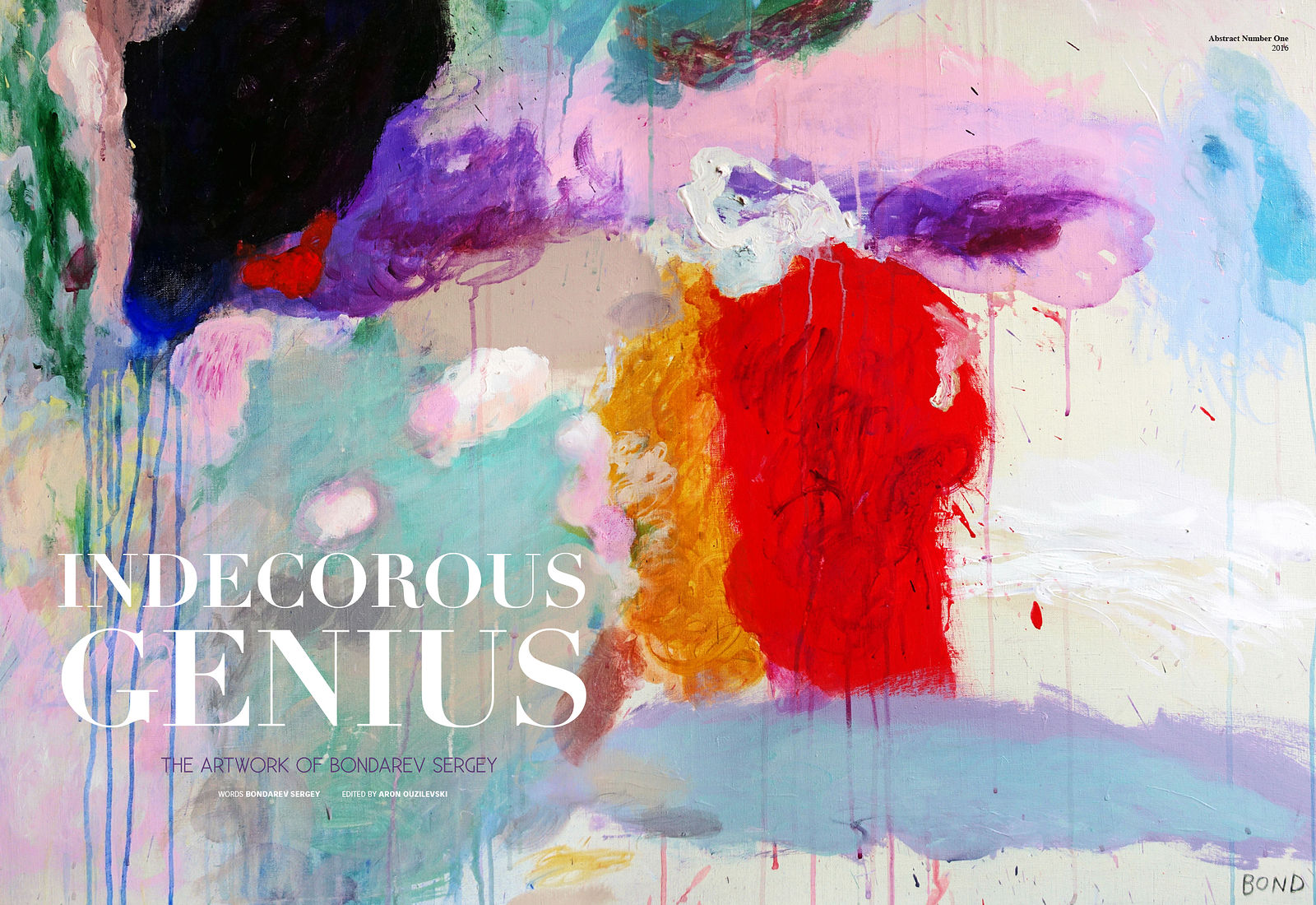Scala Regia Magazine
INDECOROUS GENIUS
My art is anti-conceptual: when you look at it, you don’t need to think, you need to feel. I deliberately try to evoke an emotive response from my audience, and often try to provoke my viewers to perceive beauty in something horrendous. Like every artist, I work on an instinctual level, releasing my thoughts without an ounce of control, assembling momentary impressions into collages that I then transform into paintings.
I studied painting for a very long time – about thirteen long and meticulous years. Towards the end, I became so tired of it – the several hourlong sessions of confined, pressured painting. As a result, I stopped painting for about ten years after graduating, during which I focused on clothing design. Thanks to design I was able to mould my style into something that can be characterized as post-fashion. I often use textiles and sewn material in my decorative panels, and certain details of my paintings are reminiscent of patterns observed in fragments of woven fabric.
Contemporary artists are so afraid of banality and criticism that they start to conceive over complicated concepts for the the most simple things, appeasing a very niche and uninteresting subgroup of critics and curators. In the process they lose touch with their purpose, with the ability to express themselves and forget how to receive pleasure from their own art. I paint for my own satisfaction – it’s a passion that is difficult to contain within a framework. I’m happiest when I am pleased with my own work, and simultaneously when collectors purchase my work with the same passion that I create it with. Currently, my work decorates the homes of private collectors in Europe, America, China and Russia. An artist is not obliged to explain his work to anyone, and needs to be free. If an artist is just beginning his career and needs to make a financial foundation, they can earn money by drawing ceremonial portraits, designing dresses, or even sweeping the streets; but this can’t, and shouldn’t serve as a barrier for them to immerse themselves into their own artistic realm.
I try to find genius within the vulgar, and I’m often inspired by very strange images. I’m constantly battling against the confinement that exists inside of me, and I believe that I’m only at the beginning of a long trajectory that will take me to an even more enchanting place. I was born in the Urals (in the middle of Russia) – a region permeated by heavy industrial surroundings and people whose harsh living conditions are enshrouded in 100 shades of grey. The regional drabness prompts their souls to reach towards the festive, and they (especially the women) try to color themselves as much as possible: sequins with tinsels – combining the uncombinable. This can all look very naive, but also profoundly beautiful in its own way. My own thrust towards superfluous decoration and dazzle was born out of this same phenomenon. I’m convinced that our lives are artificial and naturalism is just laziness, so my images may often appear overly-eccentric to people who are of a particularly lazy disposition. My work contains irony and self-irony, but humor was never an end in itself for me. Rather, the humor is a device that can attract attention and shake my viewers into observing themselves and the world around them more intently.
My art is an ironic tale about contemporary society, its aspirations and the images that dominate the minds of its members. It’s a tale about societal consumption and globalization that prompts viewers to notice the intimate places where things are living lives of their own on the backdrop of a chaotic world.
In spite of this, I also enjoy communication with the past; not that long ago the book Heavenly Bodies: Cult Treasures Spectacular Saints from the Catacombs fell into my hands. The book inspired my obsession with the decoration of human skeletons, and I’m currently creating couture clothing for skeletons, and live skeletons often feature in my paintings. I bring attention to the value every moment in a person’s life – even the most seemingly insignificant moments. Ancient Romans enjoyed reminding each other of their imminent deaths: it was a widespread belief that reminding yourself of death allows you to forgive minor grievances, and to become more noble and magnanimous. My skeletons are also essentially saying “Respice post te! Hominem te memento!” (“Look behind you! Remember, that you are a person!”) And if you’re lucky, your skeleton will be adorned with shiny gold paillettes.
